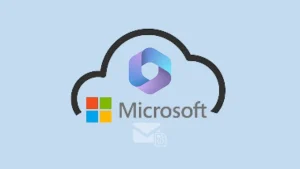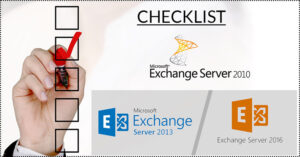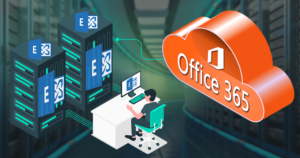EWS (Exchange Web Service) Throttling is used to control the amount of resources an application can consume in the Exchange Online. Moreover, it allows applications, like Microsoft Outlook and third-party tools, to connect with Microsoft Exchange. Apart from this, throttling protects the service from performance issues due to the overuse of applications. Sometimes, users are also required to disable or increase EWS throttling in Exchange Online, as they can easily speed up the migration by disabling EWS throttling in Office 365.
This blog will share the two methods users can use to increase/turn off the EWS throttling in Microsoft Exchange. The first uses Microsoft 365, and the other uses PowerShell commands. So, read this blog to the end and learn the procedure to turn off Exchange web service throttling in Office 365.
Why do users need to increase or disable EWS throttling?
In some scenarios, users need to adjust or turn off the EWS throttling, and depending on the situation, they need to disable or modify throttling. Let us explain a few common reasons behind disabling or increasing throttling.
- Sometimes, users need more resources than the default throttling policy provides because they are using custom services or applications. So, users are required to customize the EWS throttling as per their requirements.
- In case users are facing errors because of the default resources limit, they need to adjust throttling to avoid errors and enhance performance.
- Moreover, suppose users are using any third-party application or service that is enrolling in the tasks where they are required to interact with the Exchange Online, which needs more resources; in that case, they must look to adjust EWS throttling and increase the number of resources.
Users might have other reasons behind moving into increasing or disabling EWS throttling in Microsoft Office 365. Now, we will know the ways to manage EWS throttling, so let’s carefully understand the steps to increase or turn off throttling.
Tricks to manage EWS throttling in MS Office 365
As we shared above, we will learn two methods in this blog to increase or turn off the throttling in Exchange Online. First, we will share the stepwise process of managing throttling using Microsoft Office 365.
Adjusting EWS throttling using Office 365
Follow the steps below to disable EWS throttling in MS Exchange Online.
- Go to the Microsoft Office 365 admin center and log in to the admin page.
- Tap the Show All option in the sidebar.
- After that, click the Support and then New Service Request
- Now, look for the throttling using the search bar, choose the Increase EWS Throttling Policy, and tap Enter.
- Thereafter, click the Run Test button to begin the diagnostic test.
- Then, wait till the test gets completed.
- Now, modify your EWS throttling policy for a short duration. After that, select the duration, such as 30, 60, or 90 days, per your requirements.
- After selecting duration, tick the check box and hit the Update Settings.
- Now, it will revert with the Success message showing, ‘An update to Exchange Web Services (EWS) throttling policy has been initiated. The update will be completed within 15 minutes.
- Once you get a message from Microsoft about temporarily changing the EWS throttling policy, kindly tap Contact Support and create a new service request.
- After 15 minutes, retest and verify whether the changes have been applied.
Via PowerShell commands
Users can also use the Microsoft PowerShell commands to temporarily disable EWS throttling. Install the Exchange Online Management Module using the below command:
Install-Module -Name ExchangeOnlineManagement- Users need to connect to Exchange Online if they want to manage throttling using PowerShell commands. To connect to Exchange Online, run the below command.
Import-Module ExchangeOnlineManagementConnect-ExchangeOnline -UserPrincipalName your_email@domain.com- We will use the CustomEWSPolicy command to create a new throttling policy that allows more resources than the default policy.
New-ThrottlingPolicy -Name "CustomEWSPolicy" -EWSMaxConcurrency 10 -EWSMaxBurst 50000 -EWSRechargeRate 10000 -EWSCutoffBalance 100000- If you want to assign this custom EWS throttling policy to a specific user, kindly follow the shared script below.
Set-Mailbox -Identity user@yourdomain.com -ThrottlingPolicy "CustomEWSPolicy"- After that, create a new policy to set the EWS throttling to unlimited using the command as follows:
New-ThrottlingPolicy -Name "NoEWSLimits" -EWSMaxConcurrency Unlimited -EWSMaxBurst Unlimited -EWSRechargeRate Unlimited -EWSCutoffBalance Unlimited- Now, you have to assign this newly created policy to a user by running the following command:
Set-Mailbox -Identity user@yourdomain.com -ThrottlingPolicy "NoEWSLimits"- You need to verify the throttling policy using the command below.
Get-Mailbox -Identity user@yourdomain.com | Format-List ThrottlingPolicyYou can use the PowerShell commands to disable EWS throttling in Exchange Online. After completing your task, if you want to switch to the default throttling policy in Office 365, follow the following command.
Set-Mailbox -Identity user@yourdomain.com -ThrottlingPolicy $nullThese are two solutions that users can use to manage EWS throttling to increase migration speed or for any other reason. Users can also look for a professional third-party tool to make their migration task as easy as a cakewalk, which we are going to discuss in the following section.
Shoviv Exchange Migrator: An easy solution for Exchange migration
Shoviv Exchange Migrator allows users to perform migration tasks across all Exchange versions. It allows users to process limitless items at once without affecting the originality of the data. Moreover, this tool retains the data’s folder hierarchy and meta properties while performing the migration task. It is easy to access; even if users lack technical knowledge, they can easily perform the migration task.
This software can move user mailboxes, public folders, and archive mailboxes without any issues. Also, users can easily add multiple mailboxes without any size or count limitations. This tool has an incremental export feature to prevent duplicity and resume the process where it last stopped.
Wrapping Up:
Users might need to know how to disable or increase EWS throttling in the Exchange Online for various reasons. This blog has shared two manual tricks that users can use to turn off throttling temporarily. This will also help improve performance and efficiently complete the migration task. If users want to use a quick and effective approach to perform this task, we recommend that they use the Shoviv Exchange Migrator. Users can also try its free evaluation version in their system, which allows them to process the first 50 items per folder for free.
Popular Guide
- What is an EDB file & How to Locate it on Exchange Server?
- How to Do an Offline Defrag of an Exchange Mailbox Database?
- A Guide to Enable/Disable Exchange Server Maintenance Mode
- How to Stop the Exchange Server from Recreating Meetings?
- What is Microsoft Exchange ActiveSync and does it Work?
- How to Open an EDB file Without Microsoft Exchange Server?
- How to Backup and Restore Emails in Webmail? - March 25, 2025
- How to Migrate Outlook to New Computer? - February 15, 2025
- Fix If Outlook Cannot Display the Specific Folder Location - February 1, 2025


